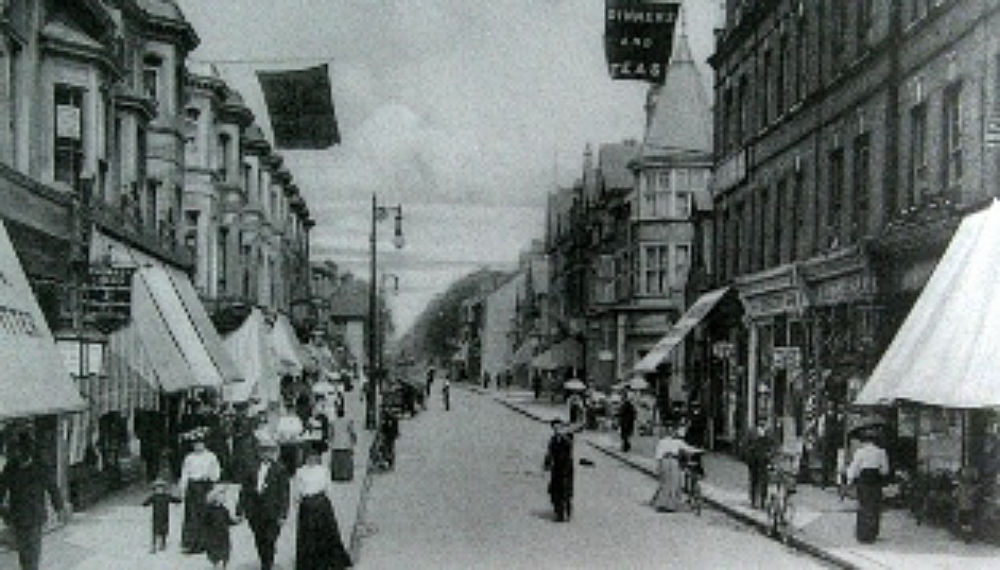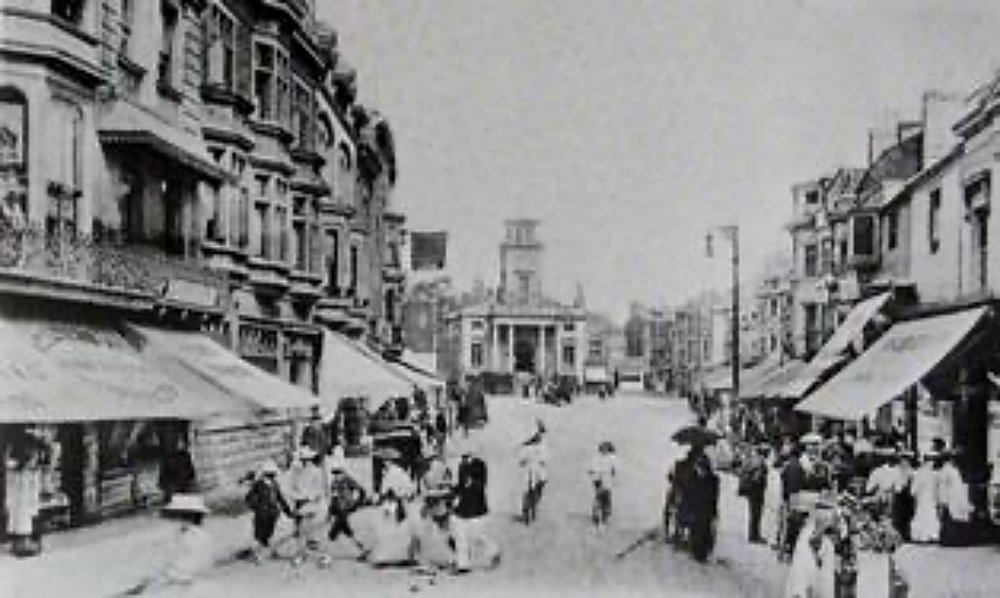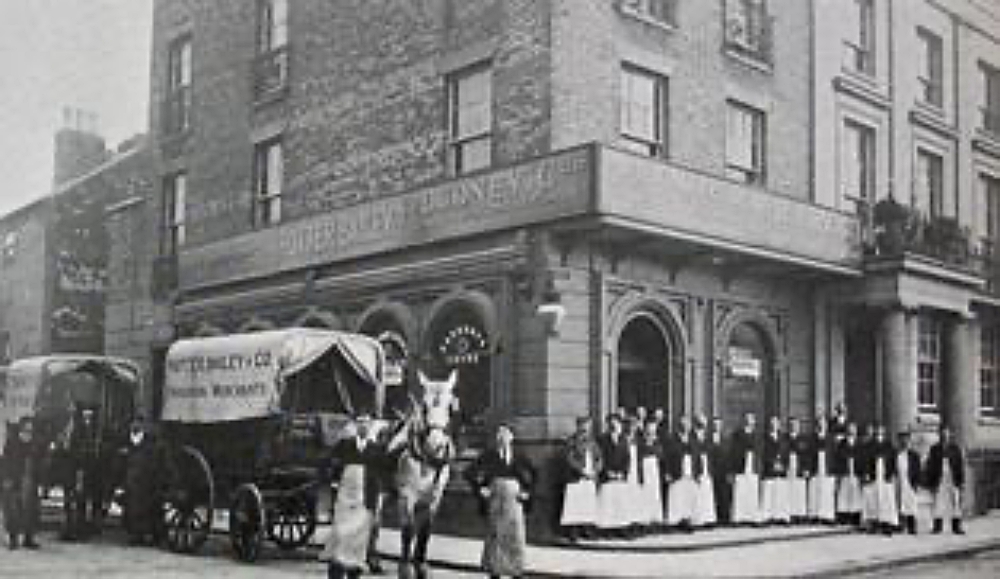Changing face of the high street
A century ago, Worthing already had a few shops offering the one-stop buying experience, if in a fussy Victorian and Edwardian style. But, in those days, most of the firms bore local family names that had been familiar to the town’s residents for many generations. Today, few of those names remain in business.

Gone are the Bentalls of this world, the Jordan and Cooks, Walter Brothers, Feest and Sons, Hubbards, Smith and Strange, Crouch the Jeweller, Kongs the coffee emporium, Wades, Mansfields Music Shop and Holders, even though most had survived both world wars.
The majority went voluntarily, many because, for diverse reasons, no member of the family could be found to carry them on. It’s very different today, with the credit crunch easy to blame.
Freddie Feest looks back to the days when Christmases meant special visits to shops that bore names our grandparents and even great-grandparents has known so well. So much for nostalgia with a capital “N”.
THE Sussex County Stores at 41 and 43 Montague Street offered an amazing variety of departments, providing their customers with an extraordinarily wide and wonderful range of goods.
All under one roof, like Harrods, in their early days, if only a fraction of its size.
They sold everything from groceries and provisions to poultry, meat, greengrocery, fruit, brushes, turnery, brooms and mats, leathers and sponges, toilet requisites, mineral waters, coffees roasted fresh daily and Ceylon and Indian blend tea at 1s 6d (1/6), 1/8 and 1/10 per pound, to name but a few. Unlike today, they would deliver everything to your home free of charge.

To get a real flavour of where the Christmas shopper bought festive gifts at the turn of Victoria’s century, let us take a festive shopping tour of late-Victorian Worthing, remembering that, by 1899, it had already become fashionable to give “useful” articles as Christmas gifts, as well as the purely ornamental.
Let’s begin our shopping spree in Chapel Road, which, in 1899 – according to the contemporary Worthing Gazette – “was rapidly assuming a commercial aspect that will cause even South Street to look to its laurels”.
For a splendid assortment or articles suitable for presents, there was no better place than Mr Thomas’s Library, except, perhaps, the new drapers, Messrs Stevens. This shop offered “all manner of pretty things – silk petticoats in all colours and woollen opera hoods of fleecy white texture.”
The window of Messrs Jordan and Gray (forerunners of Jordan and Cook, now also lost in history), in South Street, was set out with drawing-room refinement and luxury and was bound to delight all who inspected it. Articles of furniture were “tastefully and invitingly placed so that one feels tempted to occupy one of those delightfully easy chairs at the risk of becoming the observed of all observers outside”.
Patching and Co attracted crowds with its “grand window display, containing many beautiful articles of furniture set out in the most tasteful manner”. In those days, “tasteful” was the in-word and one of the finest accolades any Victorian copy-writer could bestow.
By the time the Victorian shopper had reached Marshall’s, any pretence of recording the festive gift scene dispassionately had been abandoned. “At Marshall’s,” a contemporary writer gushed, “may be seen a window that can hardly fail to have a magnetic influence upon ladies, so charming are the coats, mantles, costumes and muffs displayed, as they are, with the great regard to effect”.
In South Street were the establishments of Mr Crawford, Foyster’s Library, Walter Brothers Bazaar, Mrs Mason and Mr T. H. Crouch, the jeweller, while the grocers, Mr Denton, Mr Godwin and Mr Clarke, exhibited “the most wonderful collections of Christmas confectionery”.

Long-established Worthing residents will notice familiar local names here and more than half the firms mentioned were still in business after World War Two. Sadly, most have now vanished.
There has been a tremendous change in the pattern of Christmas gift-buying.
Today’s youngsters, for example, would fail to appreciate the suitability of what Mrs Newington’s shop, in Warwick Street, was offering as Christmas gifts for their Victorian ancestors. Silk blouses for little boys in scarlet and several other shades, with frilled collar and steel buttons, for example.
Other residents might have appreciated “comforts which cannot be dispensed with, if used wisely”, from Roberts and Son, the wine and spirit merchants. It became Worthing’s oldest continuous business before being sold out to a national chain.
In those days, they had to compete with the local brewing of Mr H. Chapman, Messrs Constable and Son, the Tamplins Company, Mr G. Pacy and Mr G. Grevatt. Worthing then had at least a dozen local breweries that were not under threat from foreign imported beers. Things have changed a lot in the past 110 years.
“Prettiness” was still very much a Victorian vogue. One local scribe noted: “A very pretty show of fans is to be seen at Ellis’s. They are composed of lace, decorated with spangles or painted with floral devices, any of which would form a delightful Christmas present.”
Another observed: “Jewellery is a gift always appreciated by both sexes and Messrs Gooch Bros have a goodly show of scarf pins, belt clasps, silver photo frames and purses”.
“Dainty buckles and charming sets of clothing are displayed at Messrs Bentall and Co,” related our Victorian observer, adding: “A little further down South Street, an endless variety of things may be had at a shop where every article is procurable for sixpence-halfpenny.”
In George Smith Junior’s window were “extremely pretty tea cosies, as well as a selection of dainty aprons and pinafores for tiny children”.
Many suitable presents for youngsters could, of course, be found at Darby’s, one of Worthing’s leading Victorian toyshops. Everything from sturdy, wooden rocking horses to early – and flimsy – miniature replicas of adult-size magic lanterns, the earliest forerunners of today’s flat-screen televisions.
It would be another century before the Gameboy and X-Box gripped our children’s demanding imaginations, but would you have guessed that one of the most envied Christmas presents on sale in Worthing back in Christmas, 1899, also came from Japan – a rather oddly described “music stool of Japanese bamboo with a crimson velvet coat”? Don’t ask!